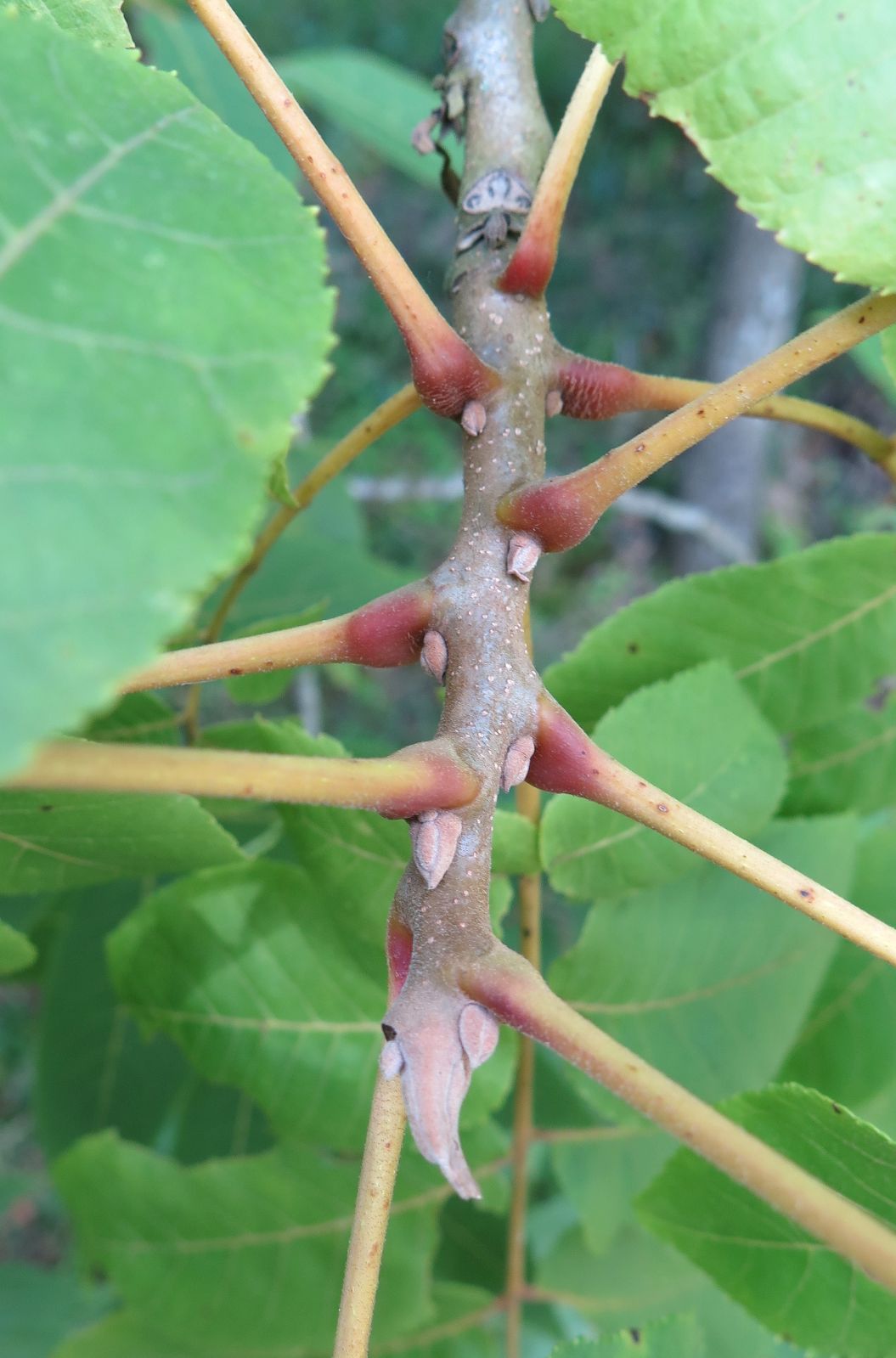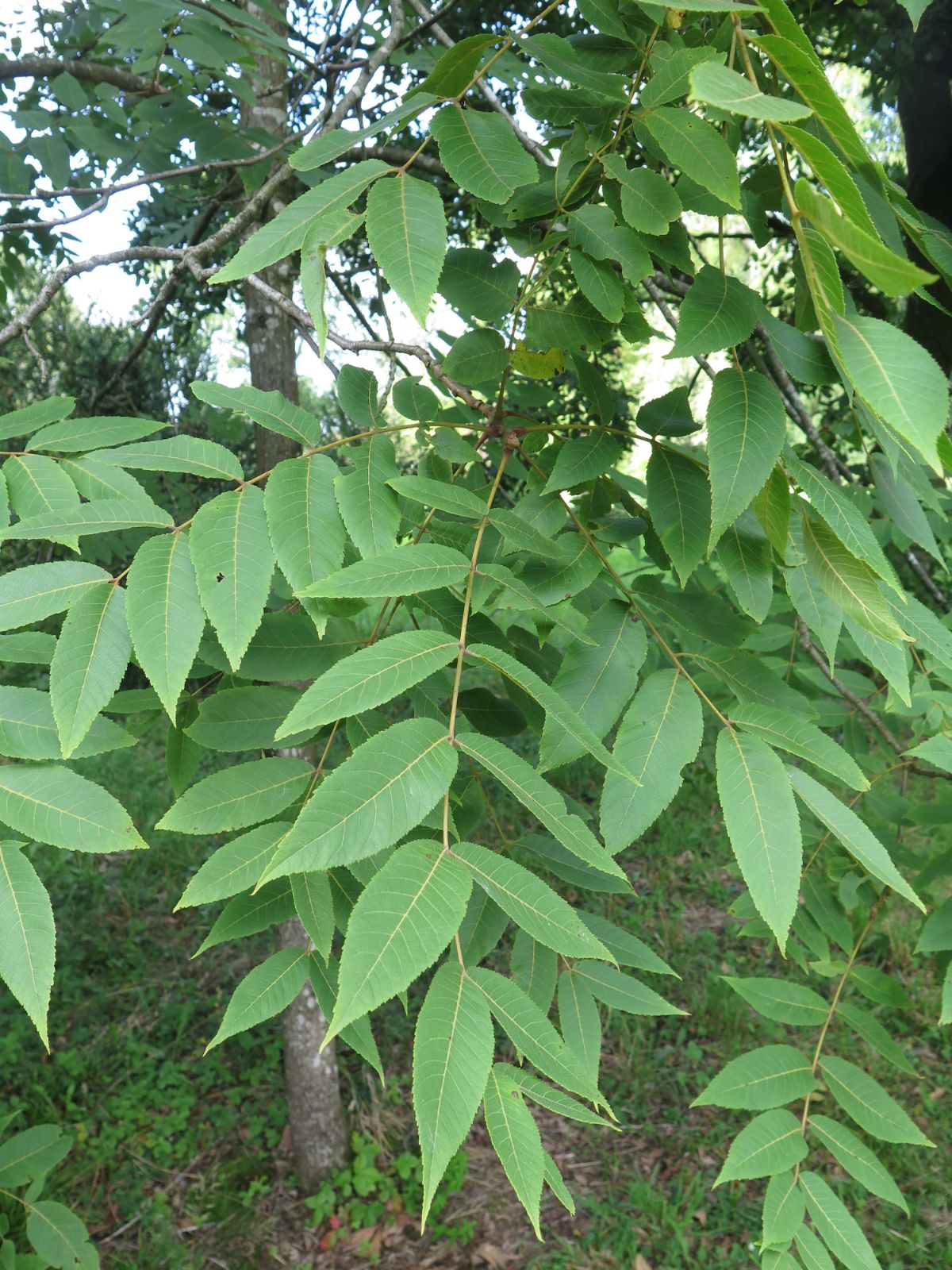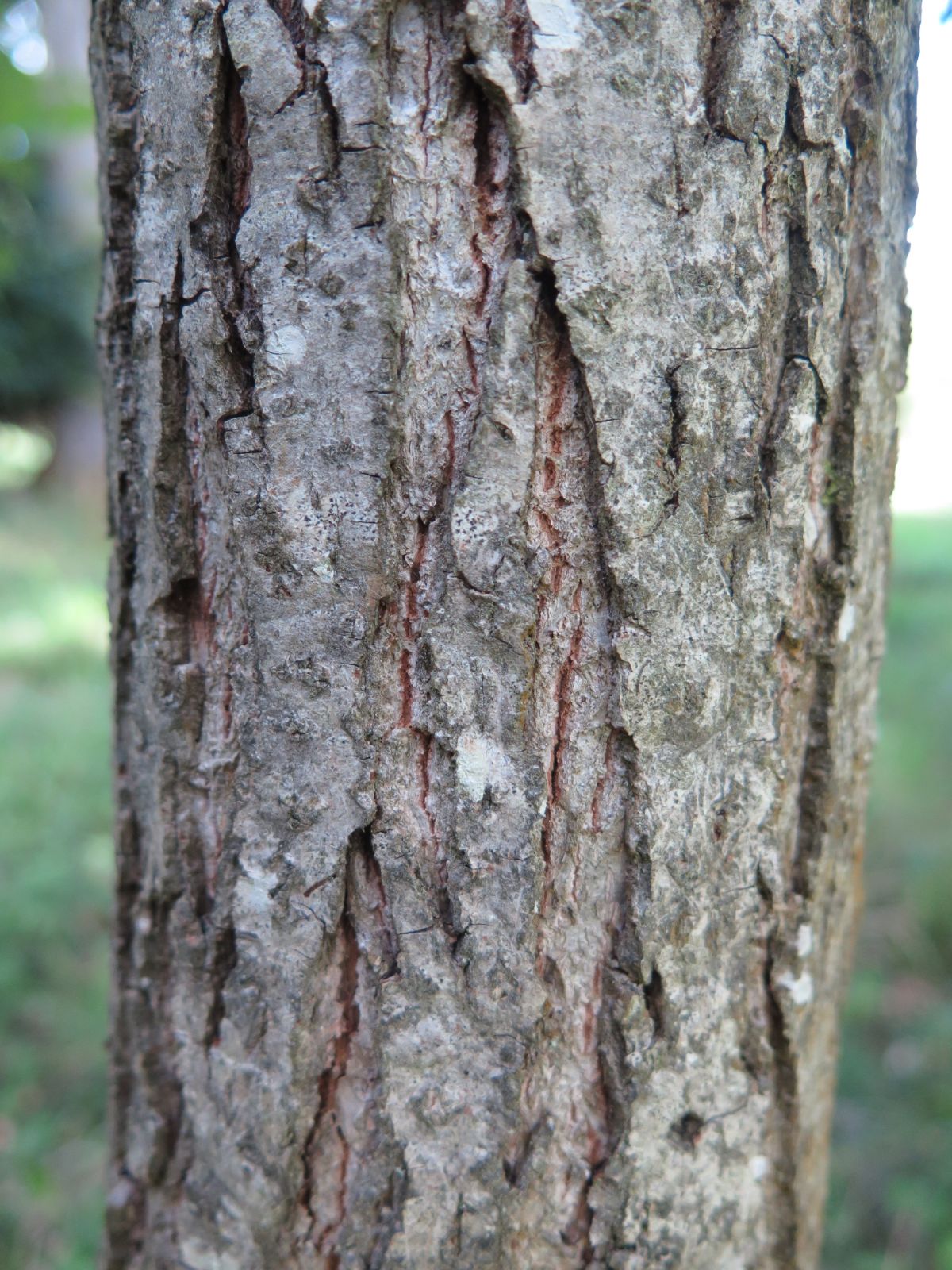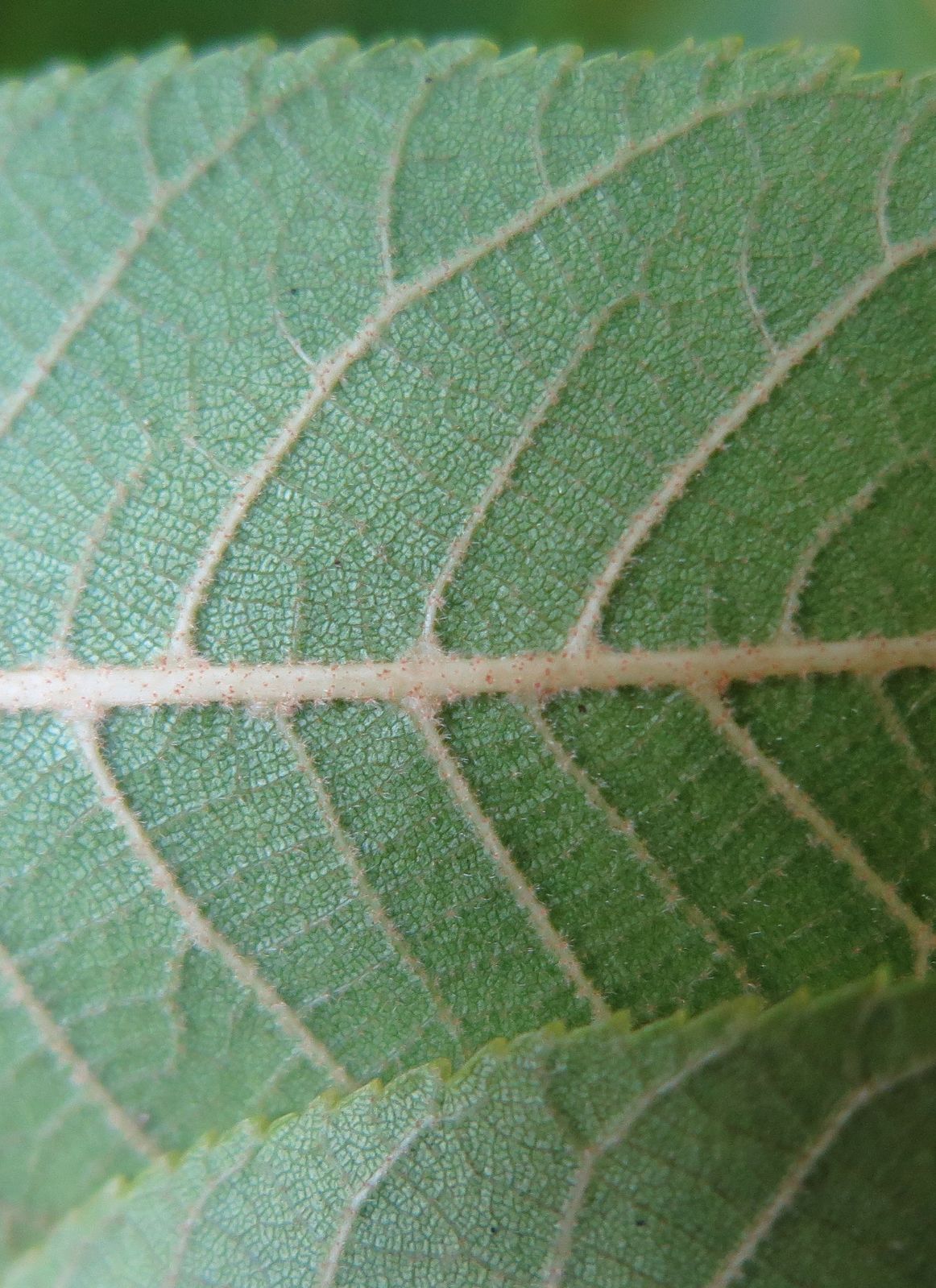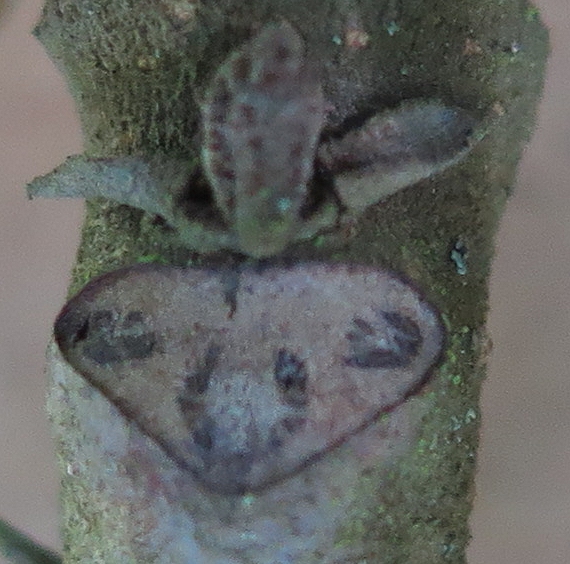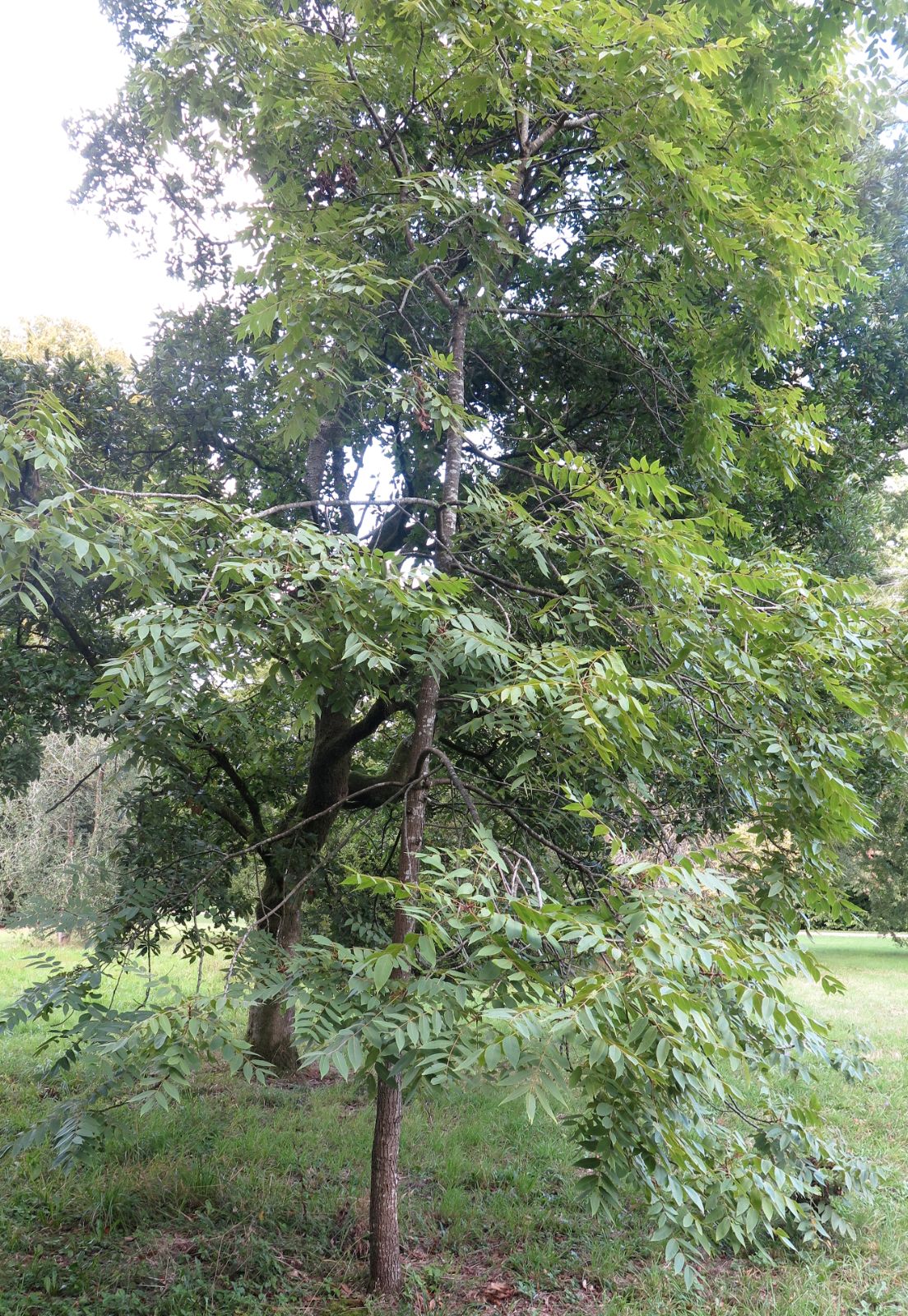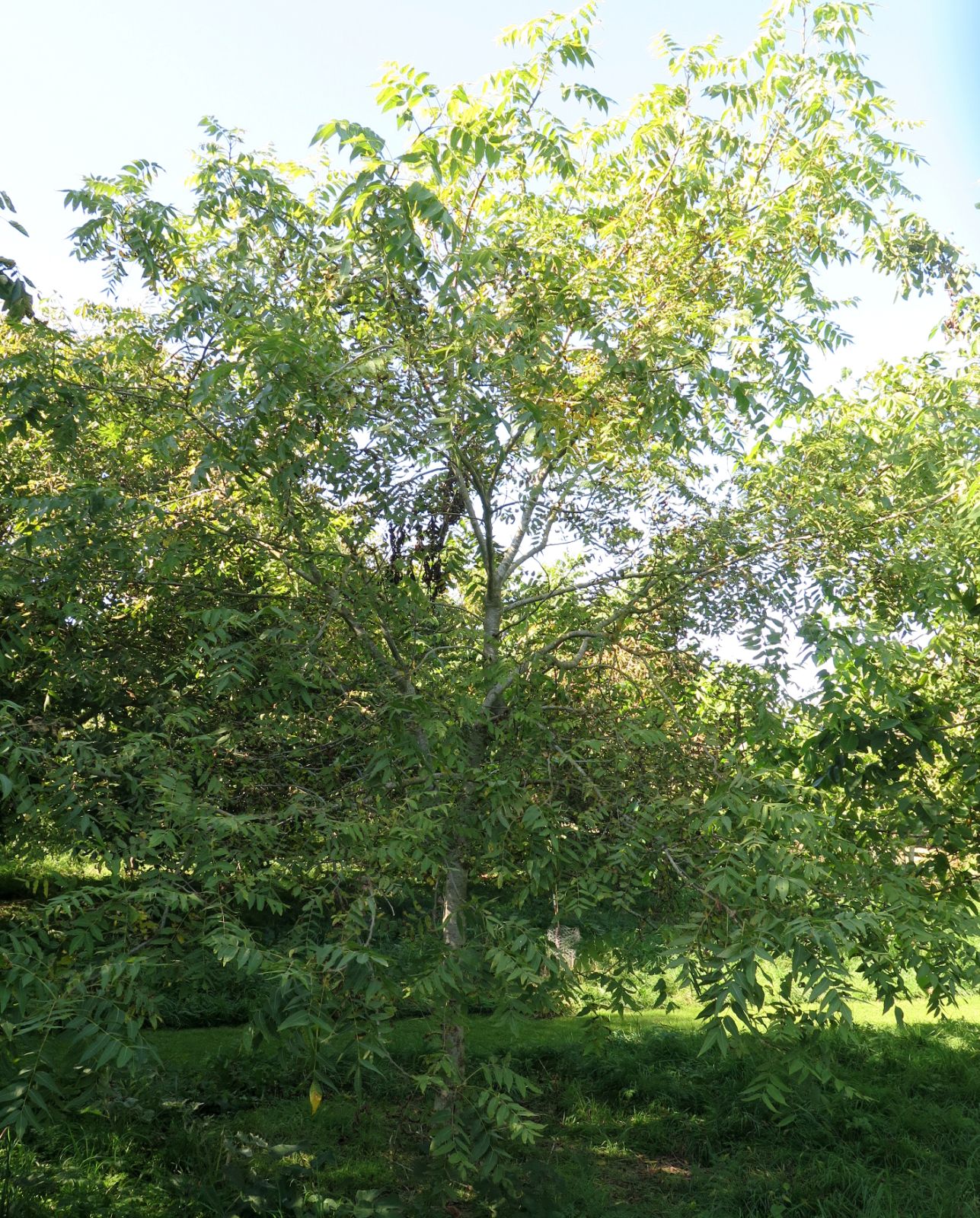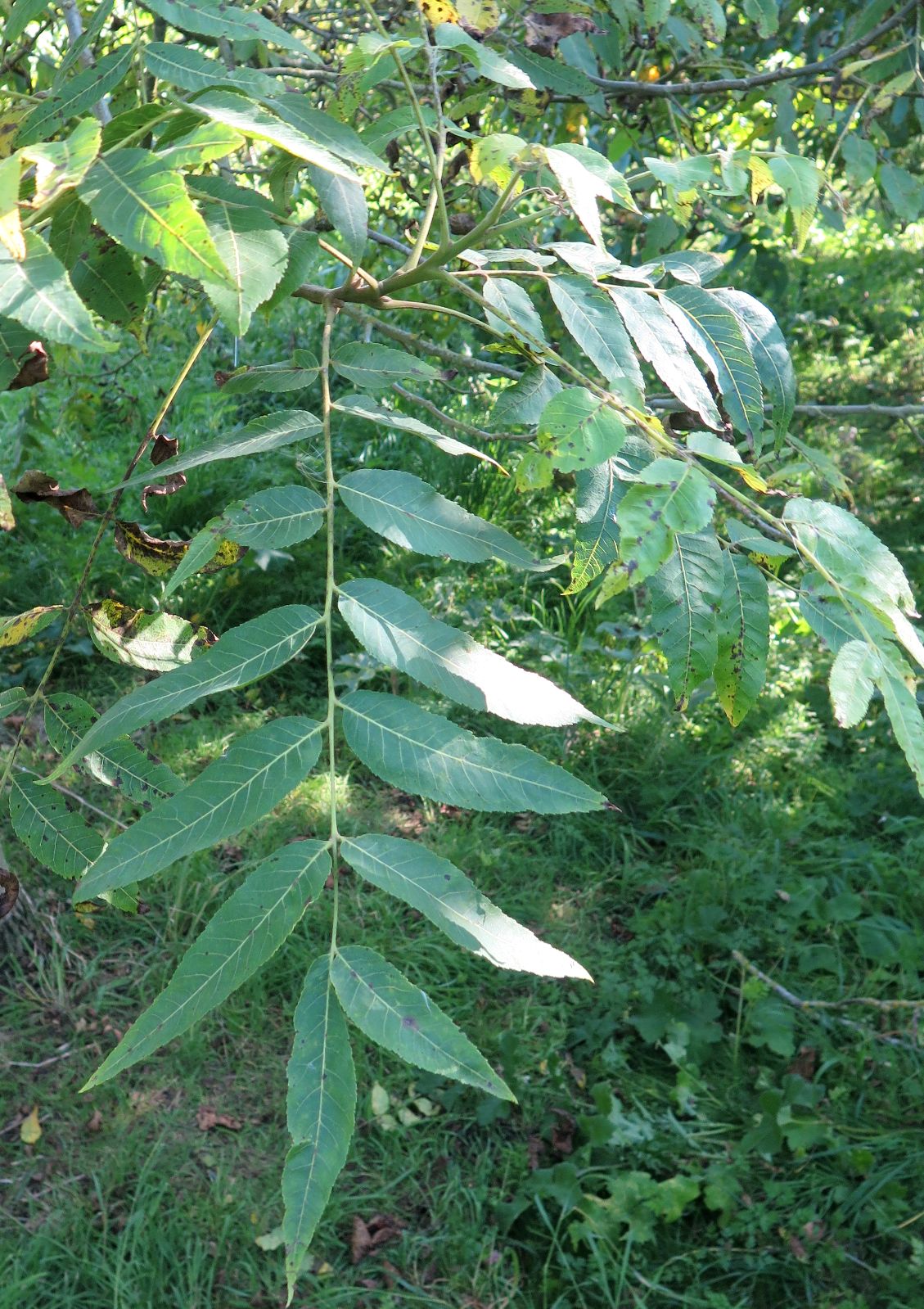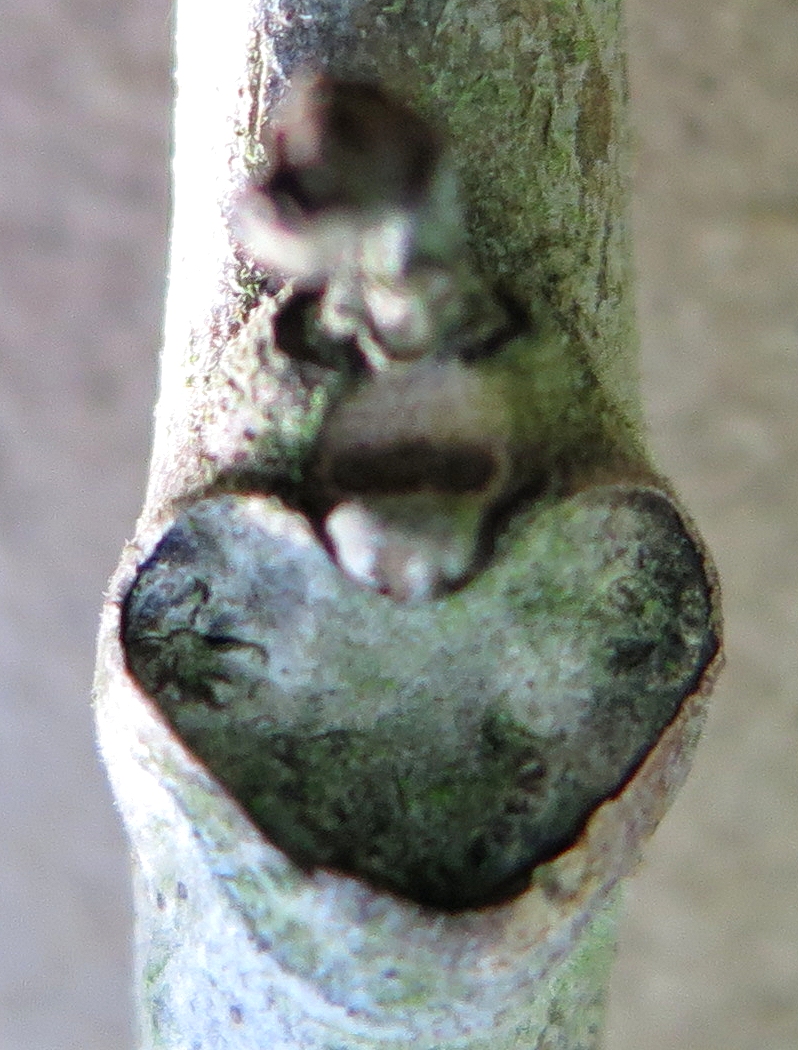Juglans Mexican Species
Sponsor
Kindly sponsored by
a member of the International Dendrology Society
Credits
Julian Sutton (2019)
Recommended citation
Sutton, J. (2019), 'Juglans Mexican Species' from the website Trees and Shrubs Online (treesandshrubsonline.
Genus
Other taxa in genus
- Juglans ailantifolia
- Juglans × bixbyi
- Juglans californica
- Juglans cinerea
- Juglans cinerea × mandshurica
- Juglans hindsii
- Juglans hirsuta
- Juglans × intermedia
- Juglans major
- Juglans mandshurica
- Juglans mandshurica × regia
- Juglans microcarpa
- Juglans mollis
- Juglans nigra
- Juglans × notha
- Juglans olanchana
- Juglans Paradox hybrids
- Juglans pyriformis
- Juglans × quadrangulata
- Juglans regia
- Juglans sigillata
- Juglans × sinensis
- Juglans steyermarkii
Mexico has six or seven native walnut species (Manning 1957). Three are endemic, one or two are shared with Central America and two (J. major and J. microcarpa) with the United States. Apart from these last two, which have their own species accounts in Trees and Shrubs Online, they are little known or understood in cultivation, but have some potential for hardiness in our area. Here we give outline information on the remaining five. Flowering and fruiting in cooler areas seems a distant prospect, so vegetative characters are emphasized. Key features of Mexican J. major and J. microphylla are included for comparison. For further detail see Manning (1957).
Juglans hirsuta Manning
A large-leaved species, leaflets 16–21, to 15 × 2.5–6 cm, usually more or less opposite, true terminal leaflet usually absent. Leaflets more or less sessile with truncate bases. Young branchlets, rachis and both leaf surfaces (at least on the veins) conspicuously brown-hairy. Terminal buds elongate, gray-tomentose. The sharply ridged nuts closely resemble those of J. nigra. This species may be the result of hybridisation between J. nigra and J. mollis at a time when their ranges overlapped. Sierra Madre Oriental, state of Nuevo León.
Juglans major (Torr.) Heller
In Mexican material: leaflets 9–15, the larger ones 6–11.5 × 2–3.4 cm, terminal leaflet present or absent. Leaflets more or less sessile with truncate bases. Rachis finely white-hairy, leaflets densely hairy beneath. Terminal buds slender. Western Mexico, following the line of the Sierra Madre Occidental: Sonora, Chihuahua, Sinaloa, Durango.
Juglans microcarpa Berlandier
In Mexican material: usually a shrub; leaflets 19–23, 5–8 × 1–1.9 cm, terminal leaflet present. Leaflets more or less sessile with rounded bases. Rachis finely white-hairy, leaflets finely pubescent beneath. Terminal buds slender. North eastern Mexico (Nuevo León, Coahuila).
Juglans mollis Engelm.
Leaflets 10–14, 6–15 × 3–5 cm, terminal leaflet present or absent. Leaflets ovate to lanceolate, more or less sessile with truncate to rounded bases. Rachis usually tomentose, especially beneath, leaflets with yellow-brown pubescence beneath. Terminal bud slender, brown- or grey-tomentose. Widely distributed down the line of the Sierra Madre Oriental: Nuevo León, Tamaulipas, San Luis Potosí, Guanahuato, Hidalgo, Puebla.
Juglans olanchana Standley & Williams
A large-leaved tree, most leaves 45–65 × 30–35 cm. Leaflets 17–21, 14–17 × 5–6 cm, terminal leaflet present. In Mexican material (var. standleyi Manning) leaflets sessile or with a short, broad stalk (stalked in Central American material), bases more or less tapering. Leaves with pale-brown-villous rachis, white-tomentose on the undersides of the leaflets (leaves not conspicuously hairy in Central American material). A predominantly Central American species, reaching north into southern Mexico (Colima, Jalisco).
Juglans pyriformis Liebmann
Leaves large, 40–60 × up to 30 cm, leaflets 18–31 (more than in any other Mexican species), 10–15 × 3–4.5 cm, more or less opposite, terminal leaflet usually present. Leaflets lanceolate, tapering to a long acuminate tip, more or less sessile with truncate bases. Leaflets variable in hairiness. Terminal buds elongate, slender, light brown. South eastern Mexico (Vera Cruz).
Juglans steyermarkii Manning
Leaves large, to 60 × 30 cm, leaflets 16–18, 14–17 × 5–8 cm, terminal leaflet usually absent. Leaflets ovate to lanceolate, more or less sessile with truncate or rounded bases. Rachis and veins of leaflet undersurfaces reddish and hairy. Terminal buds elongate, densely grey-tomentose. Guatemala, adjacent to and perhaps crossing the Mexican border.
Specimens grown in pots with protection can never show much of the character of the species and are beyond our scope. However, several quite well-established outdoor specimens of Mexican species are known in both the United Kingdom and California. Identifications must be considered provisional.
In addition to a considerable collection of potted specimens, several species are being tried outdoors by Ian Bond. His National Plant Collection of Juglans at Upton Wold, Gloucestershire, is planted on Cotswold limestone soil, rather prone to summer drought but on a gentle slope allowing cold air to drain off. A specimen of J. olanchana, grafted onto J. regia and acquired in 2006 is making an attractive, shapely tree. Measured at 3 m × 5 cm in 2014 (The Tree Register 2019), it has grown considerably since then (pers. obs. 2019). Its leaves are smaller, with fewer leaflets than wild material, and has a generally less luxuriant look. This is perhaps due only to slow growth in a cool climate; the provenance (scion wood of a Mexican origin tree from the University of California, Davis, a centre of walnut research) is a good one. A grafted specimen of J. mollis of the same age and with the same provenance has made a similarly pleasing small tree. A much smaller specimen attributed to J. pyriformis (originating in the state of Puebla), whose rather large leaves have a distinctive purple-brown rachis has not yet outgrown its tree cage.
Keith Rushforth collected seed of two Juglans in the state of Nuevo León in 1984–1985, sending seed of both to Westonbirt Arboretum and the late Maurice Mason in Norfolk (K. Rushforth, pers. comm. 2019). A beautiful specimen at Westonbirt is labelled J. mollis and attributed to KR 620. Slow-growing in our climate by the standards of walnuts, it was 6 m tall in 2019 (The Tree Register 2019). The vein pattern on the upper leaf surfaces stands out as beige against dark green; the buds are soft with pink-brown hair and the petiole bases stand out as red-purple (pers. obs. 2019). Keith Rushforth himself has a grafted specimen from scion wood of the Westonbirt tree: he notes that it does not closely match his memory of the parent tree in the wild (pers. comm. 2019). A second, larger tree survives in the Maurice Mason gardens, Swaffham (12 m × 41 cm, 2019 – The Tree Register 2019). This is attributed to J. hirsuta KR 483.
At the University of California Botanical Garden, Berkeley, two trees of Guatemalan origin are well established from a 1992 collection by D. Wilamowski. At one time identified as J. guatemalensis (Grimshaw & Bayton 2009) they are currently listed as J. olanchana (University of California Botanical Garden 2019). A third tree of Mexican origin (Nuevo León) is from seed collected in 1997 by C. Schoenfeld and D. Wilamowski. It is currently listed as J. hirsuta (University of California Botanical Garden 2019).
These species are hard to obtain. If material is offered, anybody with a love of walnuts and a suitable planting place should accept immediately and think later.

